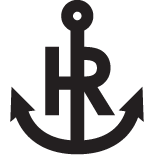The importance of the quality function in the apparel industry is chronically underestimated and it’s undermining the progress the industry is making in many areas including sustainability and waste reduction.
Often seen as a cost centre rather than a strategic function, the responsibility for managing quality is often left in the hands of junior staff with little or no formal processes or tools to support them. In hard times, cost-cutting efforts focus on reducing the frequency and/or cost of third party quality control inspections and in many cases quality management tasks are shared amongst already over-burdened colleagues in other functions such as production or sourcing.
This is a very short-sighted approach.
Putting the environmental costs of poor quality aside for now (that’s a whole other topic), these companies underestimate the Cost of Poor Quality to their own financial bottom line, as well as the quality function’s potential role in improving it.
In reality, quality-related costs cannot be allocated to a single cost centre and extend far beyond third party quality control inspection and internal coordination costs. Available literature claims that the Total Cost of Quality in the apparel industry can be as high as 30% of sales revenue. Most companies don’t realise this because the majority of costs associated with non-conformance or failure are invisible and/or difficult to measure.
So, what is the Total Cost of Quality?

As shown above, the Total Cost of Quality is the sum of the Cost of Good Quality and the Cost of Poor Quality. These two categories can be broken down further:
Cost of Good Quality
Appraisal Investments
Inspections
Audits
Testing
Etc.
Prevention Investments
Quality Planning
Risk Assesment
Training
Etc.
Cost of Poor Quality
Internal Failures
Discrepancy Documentation
Re-inspection
Corrective Actions
Etc.
External Failures
Customer Returns
Warranty & Repairs
Lost Future Sales
Etc.
Generally, failure costs make up the largest proportion of an organisation’s Total Cost of Quality, followed by appraisal investments, with the smallest investment being in prevention initiatives.
At best, many of the visible costs of poor quality have a way of creeping back into a brand’s product cost. At worst, invisible failure costs such as extra administration and firefighting, excessive inventory, loss of future sales, loss of reputation and lost customer loyalty can significantly increase a brand’s risk.
The Cost of Poor Quality Iceberg

It is therefore important to take a more strategic view. By increasing investment in good quality efforts, in particular initiatives aimed at prevention, a company can drive down failure costs as well as further reduce the Cost of Good Quality in the longer term, positively contributing to its profitability.

It’s no surprise that as an organisation’s Quality Maturity increases (that is the organization moves from a reactive approach to a proactive prevention-focused approach), the Total Cost of Quality reduces.
Forget pass/fail inspection rates. The Total Cost of Quality is a metric that can be directly linked to strategic objectives. It makes quality measurable and understandable in the language of senior executives whose support is critical to a brand’s progression on its Quality Maturity journey.
So, if not by reducing inspection frequency or cost, how can your reduce your Total Cost of Quality? Check out our step-by-step guide on how to make progress in your Quality Maturity journey by challenging the status quo and leveraging technology.
1. Optimise Inspections
Optimise current inspections through establishing and automating protocols:
- Scope your third party inspections based on company-specified rules
- Track results and ensure speed of response through notifications and triggers
- Ensure flexibility through scenario planning
- Establish the “source of truth” through pre-inspection document comparison
2. Maximise Return
Maximise return on inspection investment through analytics:
- Benchmark suppliers
- Track defects and supplier performance KPIs over time (including on time delivery)
- Identify patterns (organization-wide, individual vendors, product types, locations)
- Improve organisation-wide visibility
3. Increase Efficiency
Increase efficiency in managing the inspection process through automation and tools:
- Keep and share inspection-related documents and communication centrally.
- Allow your inspection provider to pull inspection orders by integrating with your ERP system
- Track post-inspection follow up and generate corrective actions directly from your inspection reports
4. Increase Prevention Efforts
Increase prevention efforts - and reduce failure costs - through knowledge-sharing:
- Access best practice through community sharing (Root Cause Analysis, Defects per product type, Corrective Actions, Preventative Actions)
- Invite your suppliers and internal staff to provide their inspection results to increase the scope of your data collection and analysis
- Calibrate staff, vendors and third party QC inspectors’ decisions digitally
- Facilitate cross-functional knowledge-transfer through connected data
5. Re-invest Savings
Re-invest savings resulting from the above on:
- Improving your product and service
- Further automation
- Further prevention efforts
Sounds interesting?
We're happy to jump on a call to learn about your quality goals and discuss how we can help you reach them.
Sign up for our Newsletter
Stay up to date with what we're working on and what's happening in our industry.
Happy Rabbit helps brands meet business objectives through Digital Quality Transformation. Part SaaS, part boots on the ground, our hybrid service allows customers to leverage tech and human resource flexibly according to their needs, often for less than the cost of their basic labelling. From free, easy-to-use tracking and validation tools to third party inspections to fully outsourced quality, we offer improved visibility and data insights, streamlined processes and access to knowledge and best practice through a community of like-minded industry participants.
For more information on how Happy Rabbit can help your business reach its quality potential, contact us at hello@happyrabbit.com.
